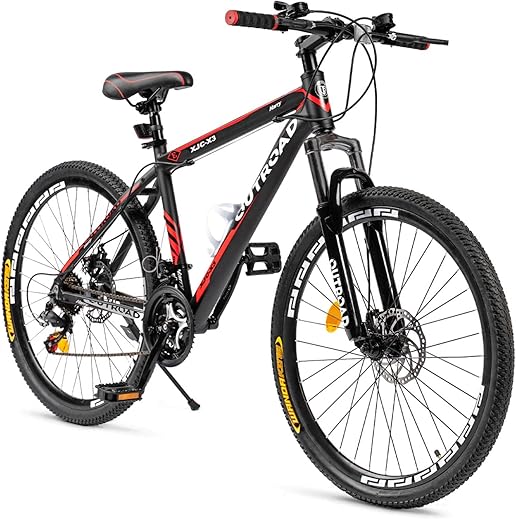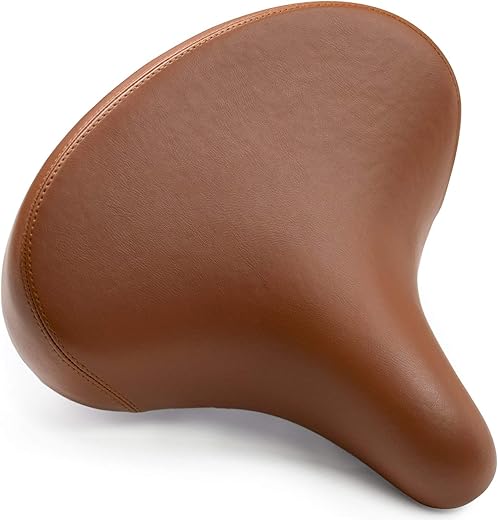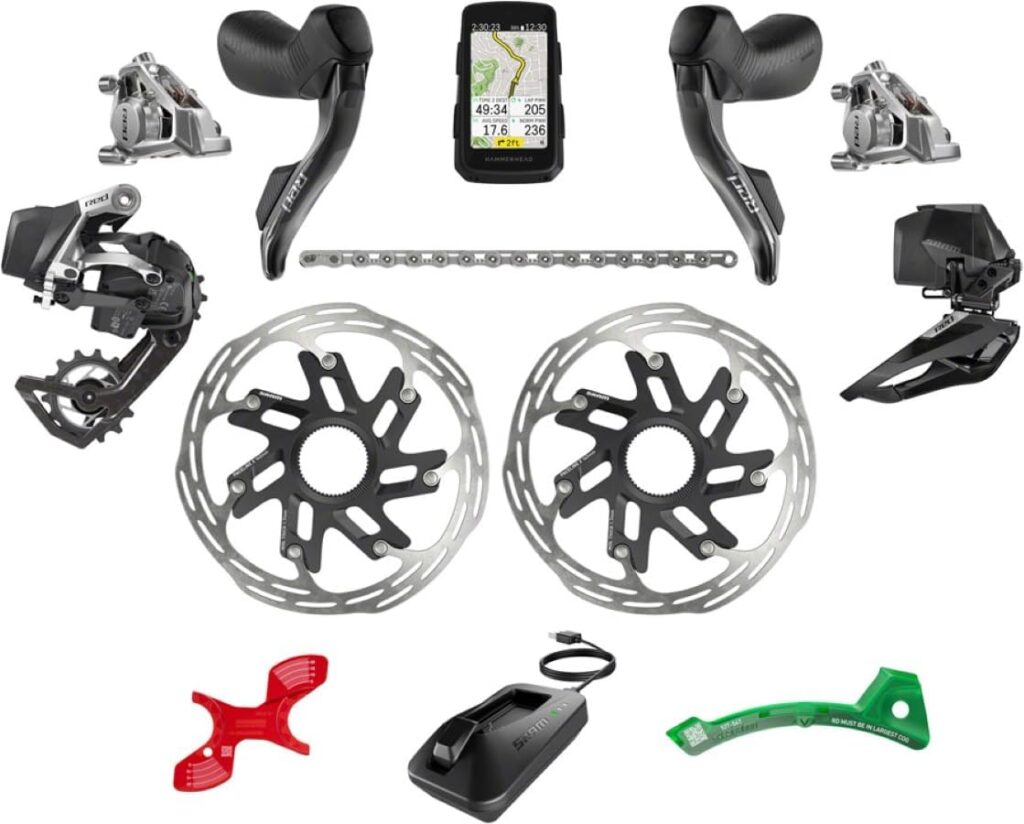Exploring the Thrill of Mountain Biking
Did you know that an estimated 40 million people in the U.S. alone take part in mountain biking each year? This adrenaline-pumping sport captivates adventurers with the promise of untamed trails, breathtaking views, and the thrill of conquering nature’s obstacles.
As a passionate mountain biker, I have experienced firsthand the rush of navigating rugged terrain and feeling the wind against my face. The right mountain bike is crucial for this experience, especially when tackling steep descents and rocky passages. Whether you’re a seasoned rider or a newcomer looking to ride the rough stuff, the right equipment can make all the difference.
In this article, I will guide you through everything you need to know about high-quality mountain bikes. From understanding different categories to essential maintenance tips, you’ll discover how to enhance your riding experience and embrace the thrilling adventure that awaits on the trails.
Understanding Mountain Bike Categories
When it comes to mountain biking, not all bikes are created equal. Different categories of mountain bikes cater to various terrains and riding styles, each designed to provide specific advantages. Understanding these categories allows you to select the perfect ride that aligns with your adventurous spirit.
Cross-Country Bikes
Cross-country (XC) bikes are designed for speed and agility, making them ideal for long-distance rides on varied terrain. They typically feature a lightweight frame, narrow tires, and a suspension system that balances speed with a degree of comfort. I’ve experienced exhilarating days on XC bikes that allowed me to zip through forest trails and navigate smooth climbs with ease. With racing geometry and efficient pedaling, these bikes are perfect for those who prioritize speed and endurance.
Trail Bikes
Trail bikes strike a balance between cross-country and more aggressive types. They excel in versatile environments, allowing riders to tackle technical trails, steeper climbs, and descents confidently. Trail bikes usually feature a longer wheelbase, moderate suspension travel, and wider tires that provide stability and traction. They’re designed for riders like me who enjoy exploring diverse terrains while seeking a fun and adventurous ride.
Enduro Bikes
Enduro bikes are built to handle the rigors of aggressive downhill trails while still being capable on the uphill climbs. These bikes come equipped with robust frames, superior suspension travel, and slightly heavier components to absorb rough terrain. Having taken my enduro bike on challenging trails, I can attest to its capability of navigating rocky descents and rapid drops—true technology crafted for bold riders willing to push their limits.
Downhill Bikes
For extreme thrill-seekers, downhill bikes offer a dedicated approach to conquering steep descents at high speeds. With heavy-duty frames, maximum suspension travel, and wide tires, these bikes are suited for downhill races and rugged terrains. They are primarily designed for descending, which means they may not excel at climbing. Yet, as I’ve witnessed on various trails, they provide an unrivaled adrenaline rush during steep rides.
The right mountain bike category depends on your goals and the types of terrain you wish to explore. It’s crucial to consider where you want your biking adventures to take you.
In the next section, we will delve into the key features that differentiate high-quality mountain bikes, ensuring you choose one that complements your riding style perfectly.
Key Features of High-Quality Mountain Bikes
When it comes to mountain biking, the devil is in the details. A high-quality mountain bike isn’t just a frame with two wheels; it’s a finely-tuned machine designed to handle diverse terrains while enhancing your riding experience. Having spent countless hours on the trails, I’ve come to appreciate certain features that can make or break a ride. Here’s what to look for:
Frame Materials
The frame material plays a crucial role in a bike’s overall performance and weight. Most mountain bikes are made from the following materials:
Choosing a frame made from the right material significantly affects your bike’s agility and ability to absorb shocks on rough terrains.
Suspension Systems
Suspension is vital for maintaining control and comfort over challenging trails. There are two main types of suspension systems:
Consider how often you’ll ride on rugged surfaces when deciding between these systems.
Wheel Sizes
Recent trends in mountain biking have led to varying wheel sizes that affect handling and stability:
I’ve often noticed that a larger wheel can significantly enhance traction and stability when navigating tricky descents.
Brake Types
Brakes are a vital safety feature, especially when speed is involved. The two main types include:
Choosing the right brake type will enhance your control, ensuring you can stop reliably even on steep descents.
Armed with this knowledge of essential features, you can now navigate the sea of options that await you in the mountain bike market. Next, we’ll explore some of the top mountain bike brands renowned for producing equipment perfect for adventure seekers like yourself.
Top Mountain Bike Brands for Adventure Seekers
When it comes to selecting the ultimate mountain bike, the brand you choose can make a significant difference in durability, performance, and overall riding experience. Over the years, I’ve had the opportunity to ride various models from several renowned brands, each offering unique qualities for thrill-seekers like us. Here are some of my favorites:
Trek
Trek is synonymous with quality and innovation. Their mountain bikes often feature advanced technology, designed to tackle tough terrains efficiently. The Trek Fuel EX series, for example, is a versatile trail bike known for its exceptional handling and suspension implementation. I’ve taken my Fuel EX on several wild rides, and it has never faltered, providing comfort even on the rockiest trails.
Specialized
Specialized is another industry leader with a solid reputation for producing high-performance mountain bikes. The Specialized Stumpjumper has become a staple for many riders, thanks to its lightweight frame and responsive suspension. During a ride in the Pacific Northwest, I was particularly impressed with how it handled muddy trails, providing superb traction and stability.
Cannondale
I have always admired Cannondale for their innovative designs and durable frames. The Cannondale Habit and its dual suspension capabilities make it a great choice for tackling technical trails with confidence. My experiences on this bike have shown me just how well it absorbs bumps, making descents exhilarating rather than jarring.
Santa Cruz
For those seeking a high-end option, Santa Cruz bikes are known for their bespoke craftsmanship and premium materials. The Santa Cruz Hightower is a versatile choice that masterfully blends efficiency with downhill prowess. After a day of tackling challenging mountain routes, I found the bike’s performance to be a game-changer, helping me push my limits with every ride.
Giant
Giant is widely recognized for its commitment to offering a wide variety of mountain bikes at different price points. The Giant Trance series strikes a perfect balance between climbing efficiency and descending capability. I’ve enjoyed many scenic trails on my Trance, confidently handling diverse terrain with ease.
These brands not only produce high-quality bikes, but they also foster a community of riders passionate about outdoor adventures. I’ve always found that the right equipment can elevate not just your riding experience but also your connection with nature.
In the next section, I’ll provide tips on how to choose the right mountain bike for your specific needs, ensuring you’re well-equipped for whatever adventure lies ahead.
How to Choose the Right Mountain Bike for You
Choosing the right mountain bike is akin to selecting a trusty companion for your outdoor adventures. With so many options available, it’s essential to focus on key factors that align with your unique riding style, budget, and the specific terrains you plan to explore. Allow me to guide you through a structured approach to making this crucial decision.
Define Your Riding Style
Understanding how you intend to ride is the first step in selecting a mountain bike:
Reflecting on my own experience, I initially chose a versatile trail bike that has allowed me to climb hills with ease while still providing the necessary robustness for those daring downhill adventures.
Assess Your Budget
Mountain bikes come in a wide range of prices, so it’s wise to establish a budget:
Just a few months back, I tested out a mid-range bike that significantly enhanced my riding experience without breaking the bank.
Consider Terrain and Conditions
Think about the terrains you’ll ride most often; different bikes excel in specific environments:
I still vividly remember the first time I took my bike on a rocky trail—having the right setup made all the difference in navigating the bumps with confidence.
Fit and Comfort
Finally, never underestimate the importance of comfort and fit. A properly fitted bike enhances your performance and enjoyment:
I’ve often found that a bike feels completely different on the trail compared to a showroom, so take the opportunity to try out multiple options.
Selecting the perfect mountain bike isn’t just about specifications; it’s about finding the right blend of comfort, performance, and personal connection to the ride. With these considerations in mind, you’re now ready to explore the next section, which will provide essential tips for maintaining your mountain bike and ensuring it remains in peak condition as you tackle the great outdoors.
Maintenance Tips for Your Mountain Bike
When it comes to mountain biking, the excitement of conquering rough terrains can quickly turn into frustration if your bike isn’t in optimal condition. After years of experiencing the ups and downs of trail riding, I’ve learned that proper maintenance is not just about preserving your investment; it also enhances your overall biking experience. Here, I’ll share essential tips that can help you keep your mountain bike performing at its best, particularly when tackling rugged trails.
Regular Cleaning
Maintaining the cleanliness of your bike is crucial, especially after rides through muddy, gritty environments. Dirt and grime can accumulate quickly, impacting both performance and longevity. As a part of my routine, I use a comprehensive bike cleaning kit to ensure every belt, gear, and frame stays spotless. This kit often includes:
Using the right products not only cleanses your bike but also preserves components, enabling smoother rides.
Inspecting Components
Routine inspections of your bike’s key components can save you from unexpected breakdowns:
I’ve often discovered minor issues during inspections that, if left unchecked, could have evolved into larger, more expensive problems.
Chain Maintenance
The chain is one of the most critical components of your mountain bike, directly affecting shifting and pedaling efficiency. Here are a few steps to maintain it:
I once neglected my chain, which resulted in skipping gears during climbs—definitely not an experience I would want to repeat!
Tune-Ups
Like any machine, your mountain bike can benefit from periodic tune-ups. A professional can:
I typically schedule a tune-up at the start of each season, right before I reconnect with my favorite trails. This ensures I’m riding at peak performance after the winter months.
Storage
Finally, when not in use, proper storage is vital. Keep your bike in a dry, cool place to prevent rust and deterioration. If you can, suspend it from a bike rack or hook to avoid pressure on the tires, which can lead to flat spots.
By incorporating these maintenance tips into your routine, you’ll not only prolong the lifespan of your mountain bike but also enhance your riding experience, making the exhilarating moments on the trail even more enjoyable.
As we wrap up this journey into mountain biking, let’s dive into how embracing the adventure can transform your outdoor experiences.
Embracing the Adventure of Mountain Biking
In conclusion, I reflect on the joy and excitement that comes with mountain biking on rough terrains. Each ride serves as a thrilling reminder of the freedom and connection to nature that this sport offers. Choosing the right high-quality mountain bike not only enhances your experience but also ensures safety as you tackle challenging trails.
I encourage fellow thrill seekers to invest in a bike that matches their adventurous spirit. Remember, it’s not just about conquering the trails, but also about enjoying the journey they lead us on. So gear up, embrace the challenges, and let the adventure of mountain biking take you to new heights!




Just got my hands on the Gravity FSX 29 Inch Dual Suspension Frame, and wow, it’s a game changer! 🚵♂️ I took it out last weekend and the ride was smoother than I expected. Anyone else tried it? Would love to hear your thoughts!
I’ve been eyeing that bike! How does it handle on rough terrain? 🤔
The Gravity FSX is designed for rough trails, so it should hold up well! Just make sure to adjust the suspension to your weight for optimal performance.
I read this article and I’m still confused about mountain bike categories. Can someone break it down for me? 😅
Sure! Basically, it’s about the style of riding. Cross-country is fast and efficient, while downhill is more about the thrill! Which one are you leaning towards?
I think mountain biking is the best way to clear my head! 🌲 I’ve been riding for over 5 years now, and I’m looking to upgrade my bike soon. Any recommendations?
Definitely check out the Fat Tire for stability and grip! Plus, it’s super fun to ride!
If you want something tough, I’ve heard good things about the 26 Inch Fat Tire Mountain Bike! It’s great for all terrains.